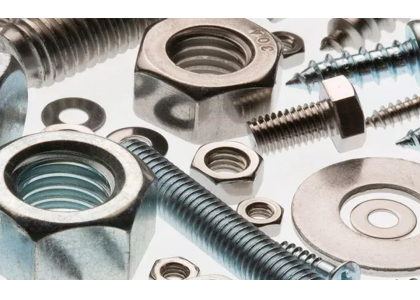Tianjin Goldensea Hardware Products Co., Ltd

Bolts and screws, these two common connecting fasteners, play a crucial role in numerous fields and equipment, namely connection and fixation. Although they often appear together, many people tend to confuse the two. However, it is not complicated to distinguish between bolts and screws.
The differences between bolts and screws in the field of fasteners:
Among fasteners, there are significant differences in the definitions of bolts and screws. A bolt, a cylindrical threaded fastener, is often used together with a nut and is mainly used to tightly connect two parts with through holes. This connection method is called a bolt connection. The screw, whose working principle is based on the circular rotation of the inclined plane of the object and friction, is a tool for gradually tightening the parts of the object. Its set screws are particularly used to fix the relative positions of machine parts. By screwing the set screw into the screw hole of the part to be tightened and pressing its end tightly against the surface of another part, we can easily fix one part to another.
Fastener bolts and screws have significant differences in shape and structure. Bolts, as a type of fastener composed of a head and a screw (i.e., a cylinder with external threads), usually have their heads designed in the shape of hexagonal heads and are relatively large in size. Screws, on the other hand, are also composed of a head and a screw, but the design of the head is mostly in the shape of a straight slot, a cross slot or an inner and outer hexagon, and their size is usually smaller.
The application differences between fastener bolts and screws. Bolts, this type of fastener, are often used together with nuts and are mainly used for through-hole connections. Their unique structural design enables easy replacement when damaged. In contrast, the application of screws is different. They often can fit directly with two objects without nuts, and usually require pre-drilling and tapping on the connecting parts. Screws are mostly used for blind hole connections, and once the connection is completed, they rarely need to be disassembled.
The differences in the tools used for fastener bolts and screws. Bolts usually need to be tightened with tools such as wrenches. Screws, on the other hand, are often installed using lifting tools.
The fastening methods of fastener bolts and screws are different. Bolts are generally used in conjunction with nuts or screwed into pre-processed bolt holes. Screws have a unique fastening method. They can be directly screwed into workpieces made of relatively soft materials without the need for pre-processing bolt holes. For instance, the wooden screws we often talk about belong to this type of screws.
The application scenarios of fastener bolts and screws vary. Bolts have relatively low precision requirements. Unless there are specific fit requirements, their disassembly is usually quite convenient. In addition, the processing accuracy of bolts is not high, and they are suitable for a variety of connecting materials, so they are widely used. In particular, the bolts that need to be matched should be capable of withstanding lateral loads. Screws, on the other hand, are known for their compact structure, but they usually do not have the feature of frequent disassembly and cannot withstand excessive force.